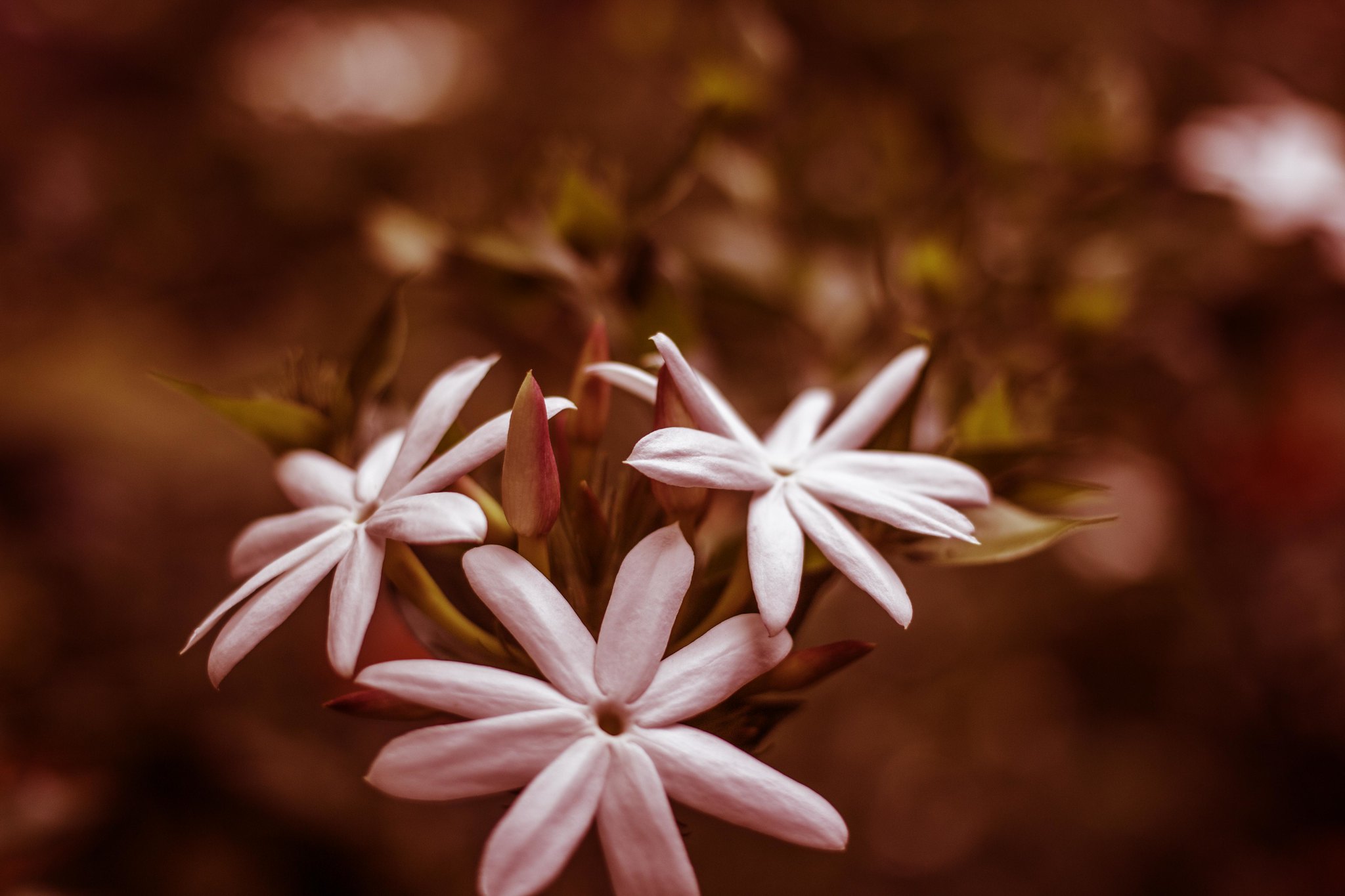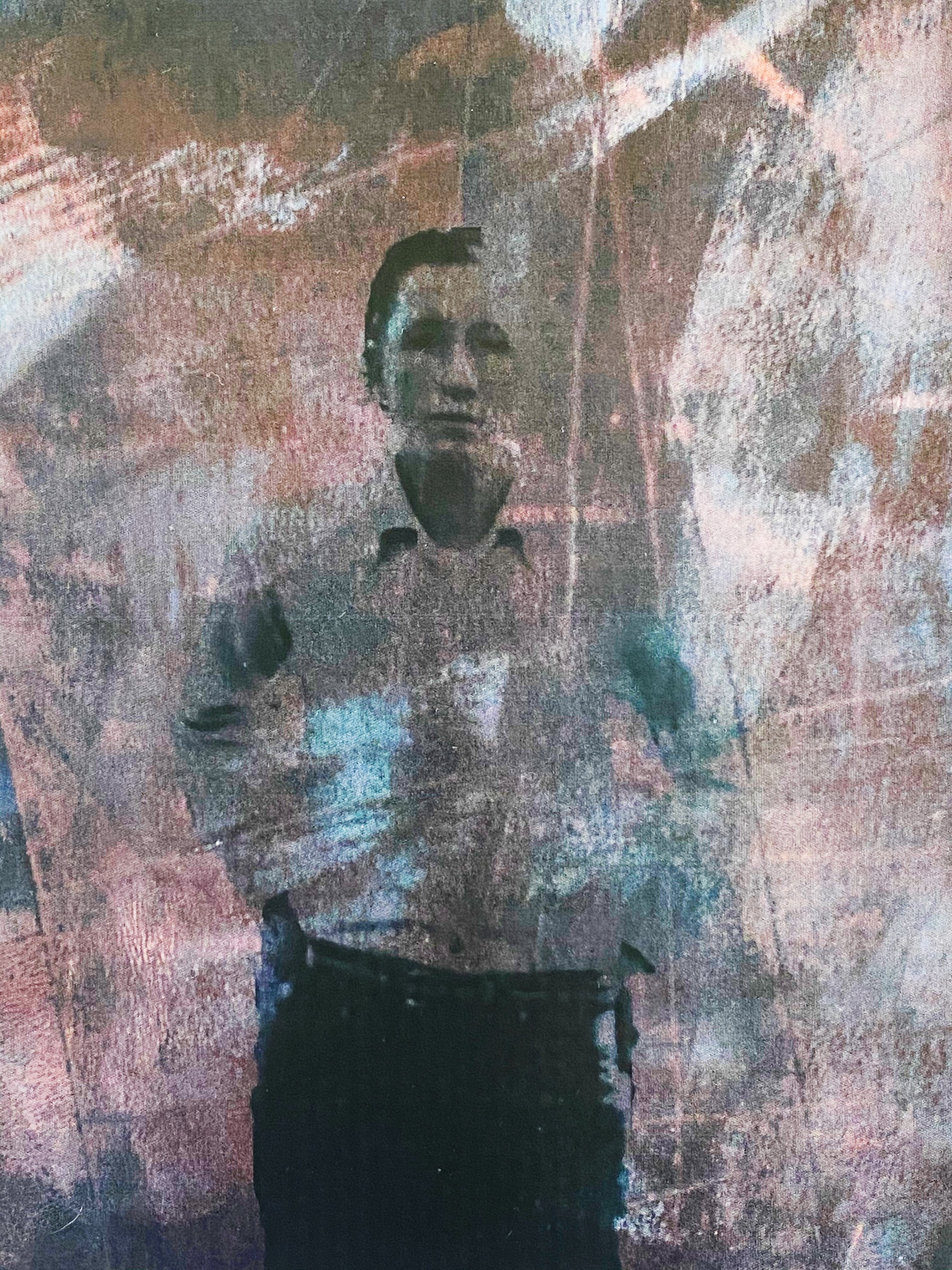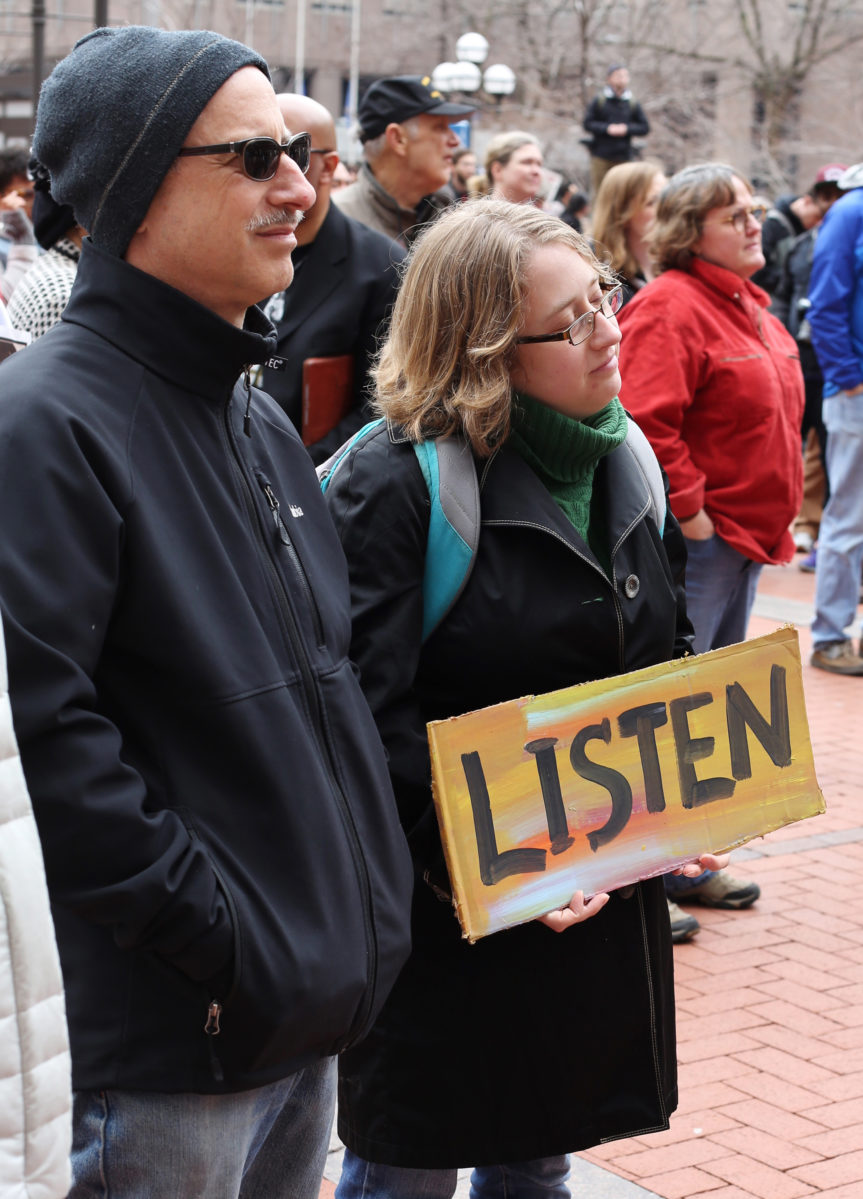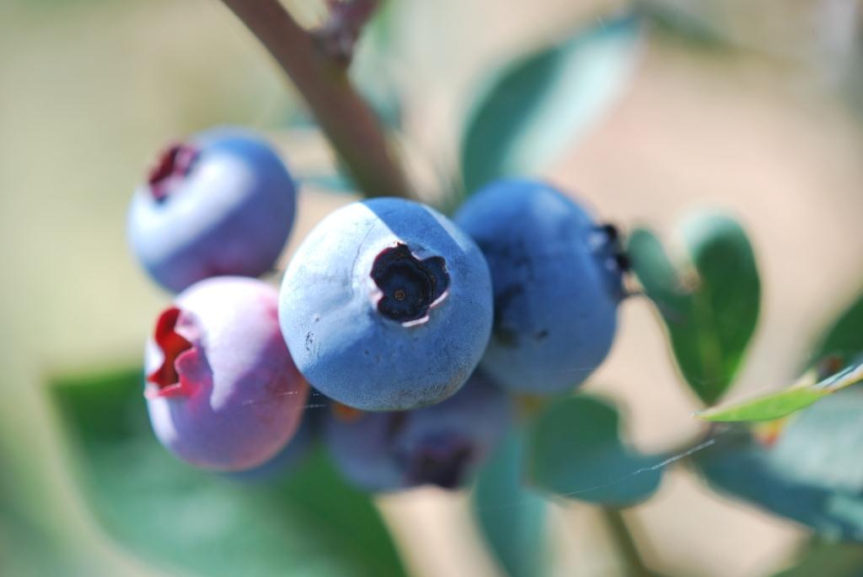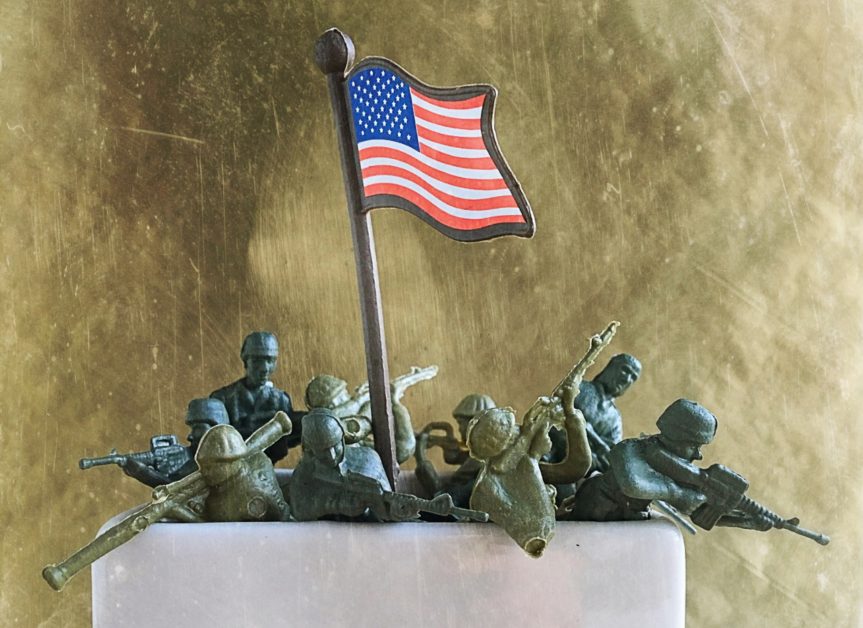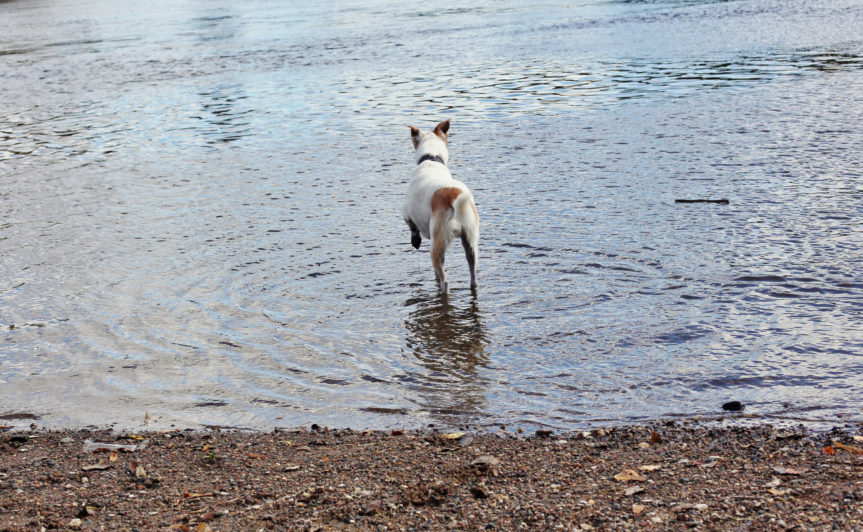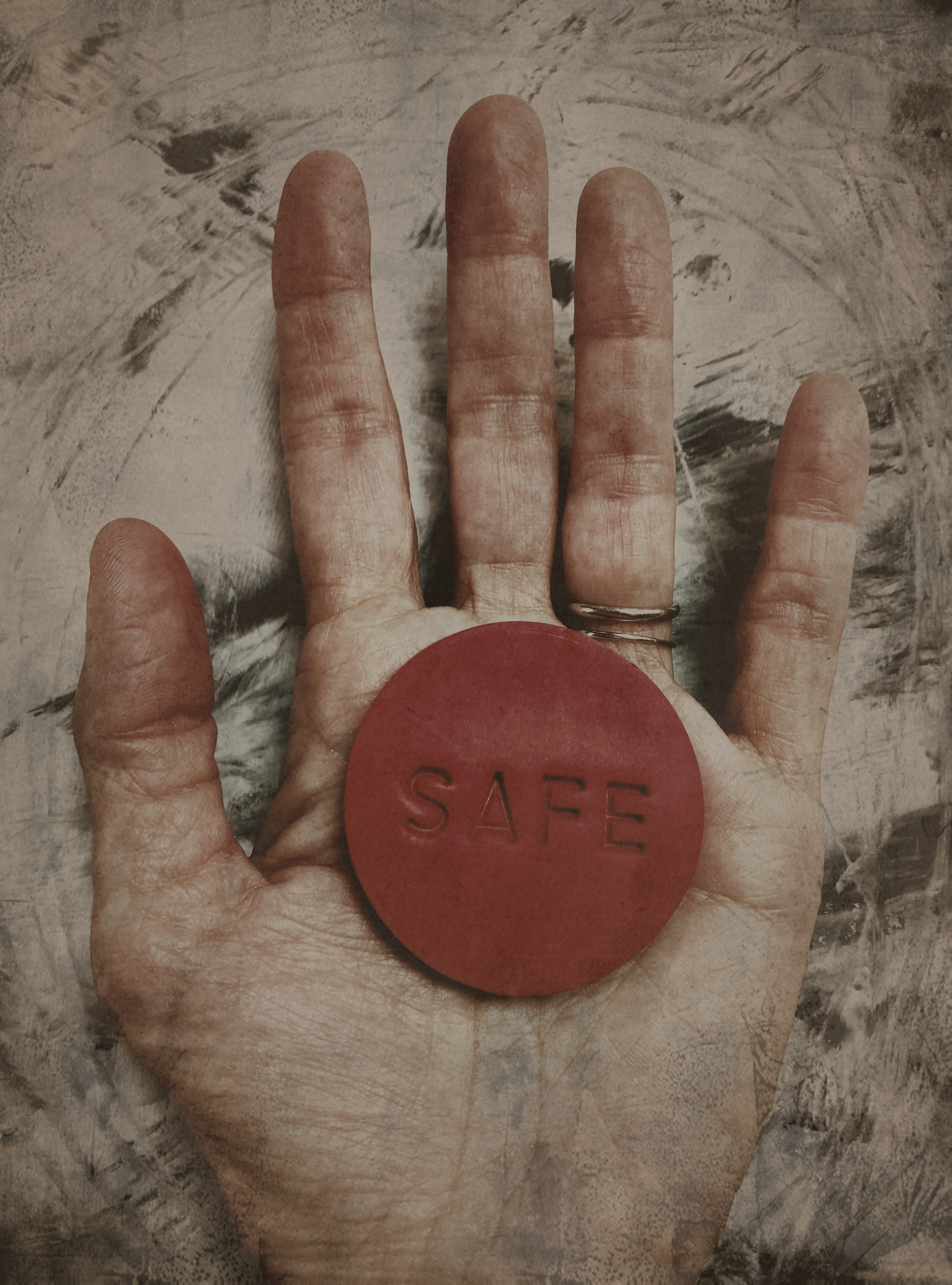
By Heather Lanier
In the room of Mental Health First Aid™, we joke about bad therapists and the body parts we lost to cancer. We describe with lyrical precision the places where our panic attacks begin and whether they travel up or down. We compare notes on the panic attacks like we’re comparing notes on dining experiences at a new restaurant. Or we stay silent and listen, grateful to those willing to describe their panic attacks because we’ve never had one, or don’t remember a time when we did … although, now that someone describes them that way, maybe we have. We recant our understandings of manic depression, tell stories about doctors’ mental health misdiagnoses, and collectively laugh at the rawness of what it means to be human.
In fact, in the room of Mental Health First Aid™, we’re invited to talk about so many things the world beyond these walls does not want us to talk about that I start to lose touch with my usual filters. At the beginning of this day-long training, our facilitator Mandi said that if we ever need to leave the room for any standard reason—bathroom, phone call—we should give her a thumbs-up, so she knows we’re okay. “Otherwise, I’ll think you’re in crisis,” she explains. A few hours into training, I feel nature’s call, walk towards the door, make eye contact with Mandi, and lift my thumb toward the ceiling. She gives me a knowing nod. As I yank on the door handle, I have the uncanny urge to call out to the entire group of twenty-seven in a jolly, assuring voice, “Just need to change my tampon!”
I do not do this. But in the room of Mental Health First Aid™, I imagine the group warmly nodding and/or chuckling in a way no group of near-strangers ever has in response to the words, need and tampon.
Maybe we laugh so much here because there is nothing funny about why we are here. We are twenty-seven college professors at a south Jersey university that will, in four weeks, make national headlines for suicide. Three in two months. But we haven’t hit the New York Times or CNN just yet. It’s November 2019, and right now the University of Southern California is in the news. Two months before, it was the University of Pennsylvania. Last month, while south Jersey’s October languished in summer-like heat, the CDC released its report: Between 2007 and 2017, the rate of suicide among people age 10 to 24 increased a whopping 54%.[*] A 2018 CDC report found that suicide rates in half the states increased among all age groups by 30%. News outlets clambered onto the stats but couldn’t position them into a landscape of meaning. Like a Brancusian sketch, the numbers offered a clear if bare-bones portrait: We are a nation in crisis.
I’ve been standing in front of a college classroom for fifteen years. I’ve never had so many students write about suicide before—their thoughts of it, their friends’ acts of it.
In the second week of this semester, a young man I hadn’t seen before walked thirty minutes into my creative writing class and sat in the back. It was my first semester at this university. I was still learning where the bathrooms were. I found his name on my roster and marked him present. At the next class, he arrived on time but left halfway through. I never saw him again.
Nine weeks later, a voicemail from the Wellness Center sat on my cell phone. It was about an unnamed student, and would I please call back? Before I could, I read the official email from the university: the student I barely knew had died. The university was not legally permitted to disclose the cause. An online forum would later name it suicide. Before the student’s death, I’d considered myself too swamped for this all-day Mental Health First Aid™ workshop. Ten minutes after reading my student’s name in that email, I asked if there was an extra spot in this room.
Four weeks from now, when we lose our third student, the conversations in the media will center around our university’s wellness center, about whether there’s a waitlist for counselors, about how well our school is supporting students in crisis. We are not counselors, and we are not in charge of hiring counselors, nor are we in charge of determining the nationally recommended counselor-to-student ratio. We’re a department of writing professors, peeking out from mounds of essays and stories and projects in this, the busiest month of the semester. We are setting aside eight hours on a Friday so we can learn how to save lives.
“You’re earning a certificate, not a superhero cape,” Mandi reminds us frequently. We nod from our seats.
The Room of Mental Health First Aid™ is, in its usual operating hours, a sterile classroom filled with six long rows of tables. This is the same room in which many of us meet monthly to discuss the unsexy specifics of curriculum changes and policy requirements. It’s the room I stood in six months ago and convinced a committee to give me the assistant professor position I now hold. I wore a black suit, clicked through PowerPoint slides, gave confident answers. I wore the very persona of infallible competence that this room has, at least for today, invited us to disarm.
Not quite public, not quite private, the room of Mental Health First Aid™ invites professionals to disclose, with promised confidentiality, all the ways it has been hard for us to be human. “We use Vegas rules here,” Mandi says, clicking to a slide that features the city’s iconic neon welcome sign. “What happens here stays here.” We can disclose adolescent-onset anxiety. We can explain how trauma might link across our years like beads on a string. We can say what we would otherwise never say in this room: “Nope, the textbook descriptions of panic attacks are incomplete. Mine begin in my arms, or my belly, or my dizzied head.”
It strikes me that if more spaces followed the norms of the room of Mental Health First Aid™, we might actually need less mental health first aid.
Mandi is a thirty-something woman with alto-voiced cheer. “How many of you have experienced depression?”
Hands go up.
“Anxiety?”
More hands. Nearly all the hands, including my own.
This is one of Mandi’s strategies: accessing our personal experiences. She has given us softcover textbooks, and she scrolls through infographic slides from the National Council for Community Behavioral Healthcare. But she also invites us to use ourselves as references, as wildly imperfect maps that might touch or even lay over and align with the maps of others, and which might, along with the textbook and slides, help us cobble together a fuller topography of what it means to be human.
We learn the official statistics: Twenty percent of young adults, ages 18 to 24, experience a mental health disorder.[†] Two-thirds of students who need mental health support do not seek it. The average number of years between when a person needs help and when they receive it is eight. The age of a third grader, the time it takes for a typical human to go from drooling baby to sassy calculator of math problems. Suicide is the second leading cause of death for adults age 18 to 24.
“Why?” Mandi asks us to speculate.
“Social media?” someone calls from the front row.
“Climate change fears?” another person guesses from the side.
Mandi nods. “Sure. Those are all factors.”
But why, she says, is a question even experts haven’t answered. In our eight hours together, we will attempt to answer another: What can we do?
•••
It turns out that what we can do is remarkably simple.
She splits the twenty-seven of us into two groups. One group is labeled “Listening.” Another is labeled “Not Listening.” The groups must race each other to come up with as many outward signs of their designated label as possible. I am in Not Listening.
“Looking at your cell phone!” one of my group members calls out.
“Looking away!” another shouts.
“Not making eye contact!”
I’m not making eye contact. I’m looking at my notepad, frantically recording their ideas. A colleague grabs my list and runs to the whiteboard to scribble our answers. With equal urgency, members of Listening do the same.
“Time,” Mandi calls.
She tallies our lists. We of Not Listening have generated twenty-one outward signs. Listening only has nineteen. Not Listening wins!
But the whole point of the activity, of course, is that listening wins. It’s the “L” in our five-step Mental Health First Aid™ plan, which goes by the acronym ALGEE. We’ve skipped over the letter A for now. Mandi says it’s the hardest—we’ll get to it at the end.
Why ALGEE? “Because this program came from Australia,” our facilitator says to laughter. Maybe the others imagine what I do: surfers along the Gold Coast, aerial views of the Great Barrier Reef. Algae, the photosynthetic organisms that made the planet hospitable for life. Maybe it can help do so again.
•••
Sidenote: It is strangely freezing in the room of Mental Health First Aid™. I say this with zero metaphoric intention. I circle my hands around a mug of hot water. I wonder if I should slide my wool ski cap off my head, so I look more professional among my new colleagues. Then I remember: We’ll be talking about suicide here. It’s fine to strive for cozy.
“You are Anxiety,” Mandi calls out to three people clustered in the front row.
Their faces look up, stunned.
“And you right here,” she circles her hand around a group beside them, “are Depression.”
Nervous laughter erupts.
Another group is ADHD. A fourth is Schizophrenia. The laughter spreads, morphing from nervous to raucous. In a culture of person-first language, where we imply that people live with diagnoses rather than become them, her wording is jarring, but also hysterical.
So I am Eating Disorders, along with two men flanking me.
“Do you want to be Psychosis?” Mandi calls to a lone woman in the back. “Or you can join another group?”
The woman laughs. She’s fine with Psychosis.
Mandi has written age-ranges around the room’s whiteboards. “Go stand where you think your assigned mental health disorder, on average, begins.”
Substance Abuse stands beneath “13-17.” We of Eating Disorders sally up beside them. ADHD idles to our right at “8-12,” as does Anxiety.
Mandi asks Anxiety why they guessed eight to twelve.
“Personal experience?” a female colleague peeps with upturned uncertainty, then bursts into a low-bellied laugh.
She’s correct. So is ADHD, Substance Abuse, and we of Eating Disorders. Depression has planted themselves below “18-24,” but they’re off by a decade.
We return to our desks, and Mandi clicks to another slide. “Remember,” she says. “A mental illness is a physical illness. The brain looks physically different.”
I write these two sentences in my notebook. I box them and surround them with stars. Mandi’s quote gives new meaning to the dismissive phrase It’s all in your head. People hear this sentence in response to everything from depression to sexual harassment to autoimmune disorders. It means: What you’re describing, you’ve invented. It also means: Quit being inconvenient. But Mandi’s quote reminds us that the head is a powerful and real place in which to experience something.
The single greatest factor that contributes to mental health disorders, Mandi says, is trauma. Capital T trauma comes to my mind. The neglect of a parent. The fist of a spouse. A box for a bed. But she says no one can define trauma for a person.
“If anyone tells you that what you’ve experienced isn’t trauma, that’s bad counseling. In fact,” she adds, “everyone probably has trauma of some kind. Because everyone is alive.”
It’s the simplest mathematical proof:
Being alive causes trauma.
Everyone you have ever known has been, or is still, alive.
Ergo ….
I’m the stepdaughter of a chiropractor. If you fill out a form at a chiropractor’s office, it will likely ask you about your birth. Was it medicated? Were forceps used? A vacuum? The concern is for your neck and spine as it moved through the birth canal. But the implication is this: the very act of entering this world is traumatic.
•••
We break for pizza. We talk about our dogs, our cats, our Netflix binges, our children. We stretch cheese-covered triangles from our teeth and describe the things we love in this world. “I like your hat,” the man to my left, of Eating Disorders, says. I thank him.
•••
In 1990, I sat in a room with a judge and explained to him an ongoing experience of trauma. I was twelve. The judge dismissed my experience as not trauma. On my lap sat a composition notebook in which I’d written about my trauma. The judge wouldn’t read it. So mine was not, could never be trauma.
The details don’t matter—I’ve written about them elsewhere. (Thumbs up, reader. I’m okay.) What matters: Twenty-first century living sometimes affirms experiences that twentieth-century living denied. Not across the board, but in pockets of places, like in an op-ed that worries for the safety of transwomen needing to pee, like on a bestseller list where sits a memoir about a brown-skinned woman’s daily experiences with racism, like in a large discussion classroom on a patch of New Jersey that was once deciduous forest inhabited by the Lenni Lenape. We name at the onset of gatherings the tribes that inhabited the land we stand on. It’s a microscopic way of acknowledging Native people and the violence of white supremacy. It also ends up saying: Trauma brought us here. Trauma is embedded in the very birth of what we’re standing on.
Six months ago, when I stood at the front of this room wearing the black pantsuit, I described how I would structure my creative writing courses. I showcased my students’ work. Projected on the screen was a student’s poem about living in a female body in a country where the president bragged about grabbing female bodies. I talked about how I diversify my reading lists, distributed grading rubrics of varying complexity, and watched committee members nod.
Here’s what I didn’t say: When I ask my students to write, I sometimes invite them to excavate the ineffable little monsters in their guts. Just like I held a little monster in my lap in the form of a composition notebook when I faced that judge. I invite my students, however gently, to gather the courage to hold these little monsters up to their ears and listen to them. And what my students end up writing in response are often beautiful and strange and powerful songs about how they have managed to survive in this world.
But it is not always easy, handling these monsters. They can and do bite. If the student who died last month had been in my classroom, what would he have unearthed? Would my lessons have helped? Hindered?
During that interview six months ago, I was required to read my own work. I read a piece of nonfiction that excavated a little monster of my own. But the prose was polished, the structure artfully arranged, pressed into shape as neatly as my dry-cleaned suit. And when I was done, my future colleagues asked about professional things: how to craft a sentence, how an essay becomes a book. This is the professionalism of my field. This is also the gift I give my students: I take seriously the craft of their writing. Which means I also assume they, as people, are okay.
But Mandi’s ALGEE requires more. She’s still reserving the hardest letter, A, for the end. And we covered L, for listening. The G stands for Give reassurance and information. The two E’s stand, respectively, for Encourage appropriate professional help and Encourage self-help and other support strategies. As a writing professor, I not only need to help my students with syntax and diction and structure and voice and revision. I also need to help them stay whole.
It’s a daunting new job responsibility in the role of twenty-first century professor: to worry about how an absence of eye-contract might trigger isolation; to keep dibs on a student’s possible need for professional counseling; to make note of any mentions of suicidal ideation (so far this semester, three) and have the follow-up conversations: Are you okay? Are you getting the help you need? I feel the weight of my students’ well-being on my shoulders.
•••
What are signs of an eating disorder? What is the difference between substance abuse and addiction? How do PTSD triggers work? Much of Mental Health First-Aid™ training requires us to understand the range of mental health disorders, so we can identify signs of them and guide people toward appropriate help. We’ve become, in eight hours, like mobile triage rooms.
We tackle letter A, as promised, at the very end. And I too will get to it at the very end. For now, know that the light from the classroom windows eventually turns pink. The sun eventually falls below the horizon. And all twenty-seven of us eventually complete our training. Mandi reminds us to do something kind for ourselves tonight: a glass of wine, a bubble bath. Every flight attendants’ emergency instructions are both clichéd and true, and Mandi reiterates them: “Put the oxygen mask on your own face first. You can’t help anyone unless you also help yourself.”
The next morning, I am ensconced in a scene the Internet might call self-care: cocooned in bed beneath a weighted blanket, supine and turning pages in a book. My children are miraculously at their grandmother’s. I am burritoed in bed past ten. I have nowhere to go for two hours.
It will make every bit of sense if I want to stay in this place forever. It will make absolutely zero sense if I start to long, ever-so-slightly, and then very much so, to return to the room of Mental Health First Aid™.
It’s the book’s fault. A memoir about being gay and Black in the south, it’s one I planned on assigning next semester. But as I turn the pages, the author’s mother is unexpectedly diagnosed with a terminal illness, and it’s the very same illness that a student’s mother has recently been diagnosed with. This student has already registered for next semester’s class.
I want to go back to the room of Mental Health First Aid™. I want to raise my hand and ask the question I haven’t figured out how to answer. Not the first question perched on top of my head (Should I assign this book?). The question buried underneath it: How responsible are we for each other? Exactly how much are we in each other’s care?
The boundaries in the room of Mental Health First Aid ™ were clear. The doors were closed. The personal stories were confidential. People gave thumbs-up. We were okay, we were okay. The only signs of the outside world showed through the windows. By training’s end, the sky was nearly indigo, and we drove home in the dark. There are only so many questions you can answer in eight hours. How responsible are we for each other? It’s a question I’ll keep carrying.
•••
The answer I left with, though, is this: At least a little bit. We are all, every one of us, at least a little bit in each other’s care.
Over the next days, I catch up on grading, read a few dozen short stories, return them to my students with comments. Ten minutes into a lesson, a student is openly weeping. She can’t be upset about my comments—she didn’t turn in any work. I assign the class a short writing activity and whisper to her: “Do you want to talk?” She shakes her head no. I say okay. Five minutes later, she’s still wiping her face with her sleeve.
“Come on outside,” I say. She follows me into the hall. It’s a night class, and the hall is lined with bluish-black windows.
She chokes on a sentence. It cracks past her vocal cords. She’s in a domestic violence situation. It’s bad. What follows is another Vegas moment. The details of her story stay with her. But the all-day Mental Health First Aid™ shifts me into gear. I listen closely. I ask questions. I hug her for as long as she wants, which is much longer than I expect, and she weeps into the crook between my neck and shoulder. She holds tight, until she lets go.
I ask about her safety. I ask whom else she has told. We return to class, and I finish teaching, and then we sit together on a bench in the hall as she calls campus safety. She speaks to the counselor on call. The counselor gives her good advice. There are next steps. A way to feel safe tonight. An expert to talk to tomorrow.
I walk her to her car, which is right in front of the building—a spot she tells me she waits for each night that we have class. This is why she’s been late, she says. I watch her close her car door and hear the click of the lock, and she drives away. It’s raining, almost seven p.m.
Reader, I’ll tell you this: She won’t pass the class. But she’ll get counseling and a safe place to live.
On my way to the parking garage, someone behind me shouts with all their might: “FUCK!” During my ascent up the garage’s concrete stairwell, two men pass me. They are very tall, and loud, and seem amiable and they could also crush me against the wall, and they could be carrying something that crushes them from the insides, and they could be perfectly fine.
We’re all a little in danger, we’re all a little in each other’s care.
When I get inside my own car, I lock the doors, relieved to create a room of just myself.
•••
It is only at the tail end of the daylong training, when my blood sugar is low and the sun is threatening to set and I have the uncanny urge to scroll mindlessly through social media, that we tackle the hardest letter: A.
Assess for risk of suicide or harm.
In other words, ask a person if they’re planning to kill themselves. If we ever suspect someone is thinking of it, we need to ask.
We practice as a group, repeating the questions in unison:
Are you thinking of killing yourself?
Are you having thoughts of suicide?
We get the words right. We commit them to memory. Mandi tells us that it can be scary to ask, which is why we’ll practice in pairs.
“And if they say yes,” Mandi asks, “then what do you do next?”
A voice pipes up in front: “Ask if they have a plan.”
She nods. “And if they do?” she asks.
“Stay with them,” another voice says.
“Do not leave them,” Mandi adds. “Call campus safety. Call 911.”
Then it’s time. I turn to the male colleague next to me. I met him two months ago.
“Are you thinking of killing yourself?”
He knows it’s coming, and still he winces. His eyebrows relax, and he assumes the role. “Yes,” he says calmly.
“Do you have a plan?” I ask.
He pauses. “Yes,” he says.
The end of the role play is remarkably stark, like a cliff-edge. We switch roles.
“Are you considering suicide?” he asks.
I’m a terrible role-player. I give him the true answer. I give him the only answer I hope people will always give me, the answer I hope every person on this planet can give every day of their lives. It’s a hopeless hope for the world’s eight billion people, all of whom have been born and have lived years and are still alive. I say “No.”
[*] From Sally C. Curtin, M.A., and Melonie Heron, Ph.D., “Death Rates Due to Suicide and Homicide Among Persons Aged 10-24: United States, 2000-2017,” NCHS Data Brief, No. 352, October 2019. https://www.cdc.gov/nchs/data/databriefs/db352-h
[†] All statistics in this paragraph come from the presentation literature from the Youth Mental Health First Aid ™ USA training.
•••
HEATHER LANIER is the author of the memoir, Raising a Rare Girl, a New York Times Book Review Editors’ Choice. Her work has appeared in The Atlantic, The Wall Street Journal, TIME, Longreads, The Sun, and elsewhere. She writes about parenting, disability, spirituality, and what a kindergarten teacher would call “big feelings.” Her TED talk has been viewed over two million times.

 Follow
Follow
